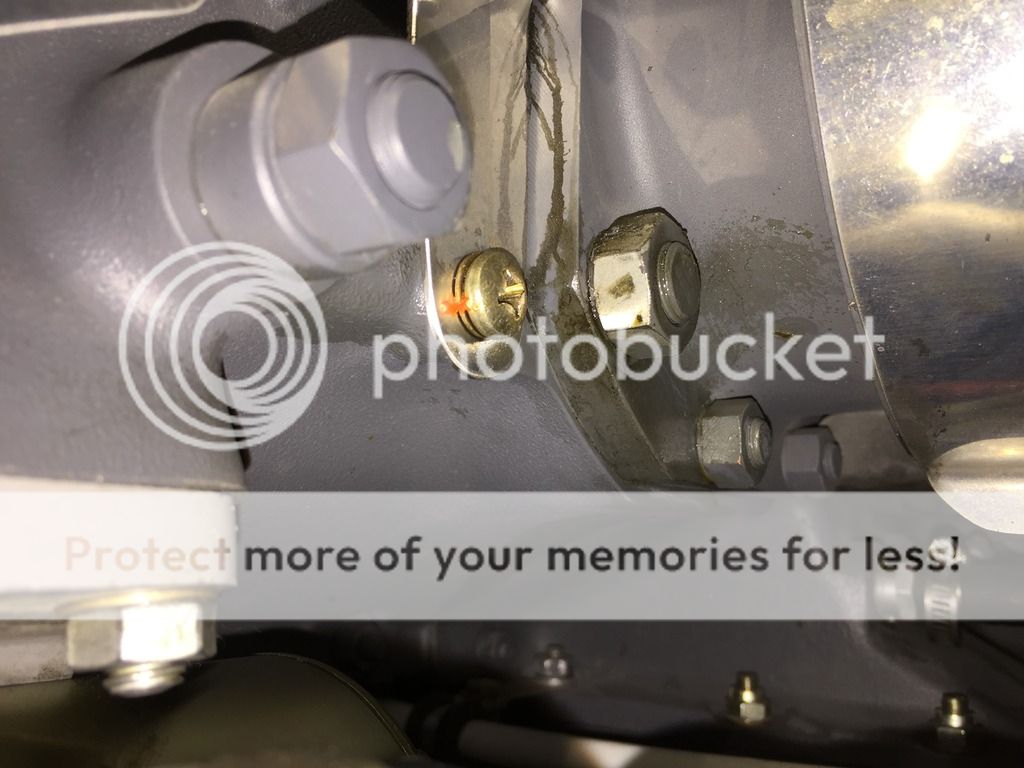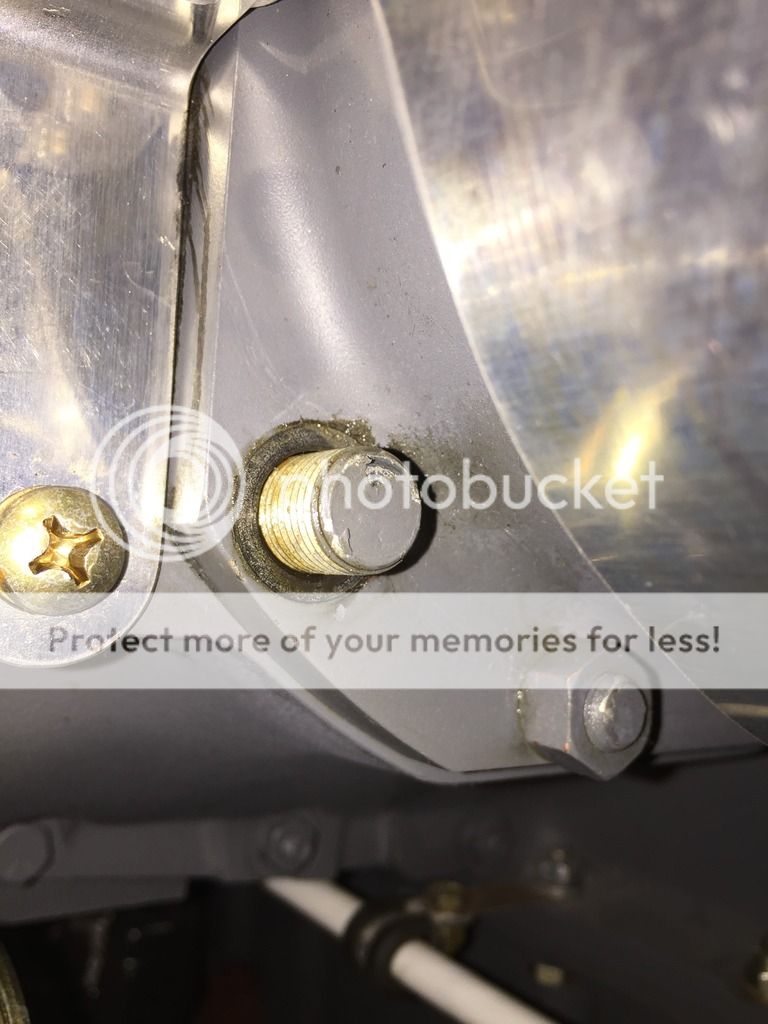ambrosesquadronca
Member
I have a Lycoming YIO-360-M1B with 125 hours on it and have been keeping an eye on this leak or more like a seep on the #2 cylinder, lower, forward 1/2" stud.
It appears to me the nut is riding on the cylinder wall radius slightly not allowing it to sit down 100%. The nut has an integral washer flat with a sharp edge. Probably not good having a sharp edge ride the radius of a casting.
Not sure what to do with this:
Leave it and let it seep?
Goop it up with something?
Thin washer and radius the edge (only 2 thread protrude nominally though)?
Round off the edge of the nut?
Opinions?
Thanks.
Dave Ambrose
RV-8A


It appears to me the nut is riding on the cylinder wall radius slightly not allowing it to sit down 100%. The nut has an integral washer flat with a sharp edge. Probably not good having a sharp edge ride the radius of a casting.
Not sure what to do with this:
Leave it and let it seep?
Goop it up with something?
Thin washer and radius the edge (only 2 thread protrude nominally though)?
Round off the edge of the nut?
Opinions?
Thanks.
Dave Ambrose
RV-8A






